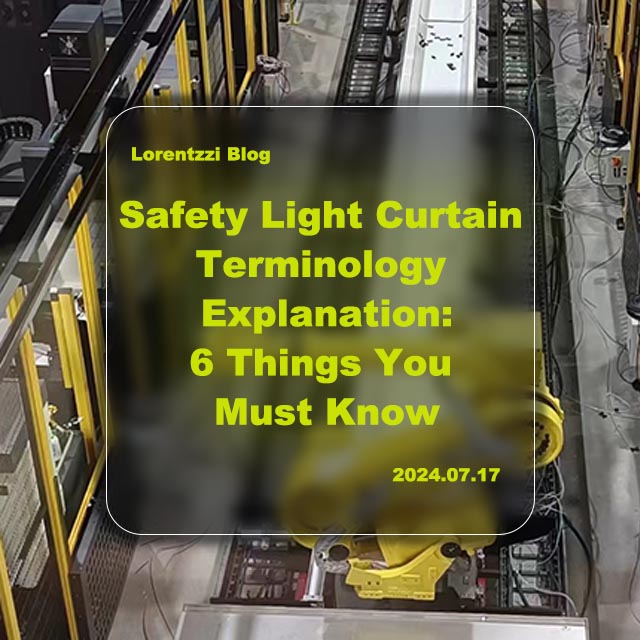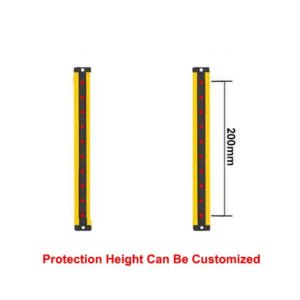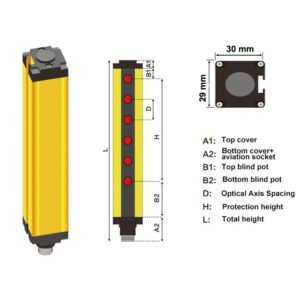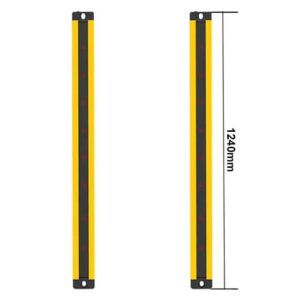Safety light curtains not only protect workers from dangerous machines in an invisible way, but also save time when frequently opening or closing guardrails manually. The first safety light curtain was developed by Erwin Sick, who subsequently founded the SICK – a well-known German sensor manufacturer.
As a beginner of safety light curtains, you may be confused by some professional terms such as EMD, PLe, Category 4, muting, blanking etc. Below we will introduce various terms in detail. Let’s get started.
Table of Contents
What Is ESPE(AOPD)?
The ESPE(AOPD) is the abbreviation of Electro-Sensitive Protective Equipment(Active Opto-Electronic Protective Device). In the safety light curtain, ESPE refers to a type of safety device that uses light beams(infrared light) to detect the presence of objects or people in a hazardous area, thereby providing protection against potential injury. When an object interrupts the light beam, the ESPE detects this interruption and sends a signal to stop or prevent the motion of the machine, ensuring safety.
What Are SIL 2 and SIL 3?
SIL 2 and SIL 3 are the safety protection levels in safety light curtains. The higher the level, the safer it is. We will introduce them one by one below.
SIL 2, which stands for “Safety Integrity Level 2,” is the second level of safety integrity as defined by the international standard IEC 61508 for electrical and electronic safety-related systems.
SIL 3 is Safety Integrity Level 3, this is the highest safety integrity level defined in the IEC 61508 standard. It is used to classify the safety performance required for safety functions in safety-related systems. SIL 3 requires very high reliability to ensure that the safety function operates properly when required.
What Are Category 2 and Category 4?
Category 2 and Category 4, also known as Type 2 and Type 4, are used in machinery safety and risk assessment. These terms are often used in the context of the ISO 13849. Category 4 is the highest category and is used for machinery or systems where the risk assessment indicates that the highest level of safety measures is required.
Here below is the advantages and disadvantages of category 2 and category 4 safety light curtains, also you can get more knowledge from our this article:Safety Light Curtain Types: Type 2 and Type 4 Differences

What Is PL e?
PL e is Performance Level e. This is a performance level defined in the ISO 13849 standard and is similar to SIL 3 in terms of the required safety level. Performance Level e requires a higher level of safety performance and is intended for machinery or systems where a risk assessment has determined that this level of safety is required.
What Is EDM?
EDM in the safety light curtain is the abbreviation of “External Device Monitor“. The EDM function is mainly used to monitor the working status of devices such as external safety relays or contactors connected to the safety light curtain to ensure that they can normally cut off the circuit in an emergency, thereby playing a safety protection role. If an external relay or contactor fails, such as the contact sticking and unable to disconnect, EDM can detect this abnormality and trigger the alarm, causing the equipment to shut down until the fault is eliminated.
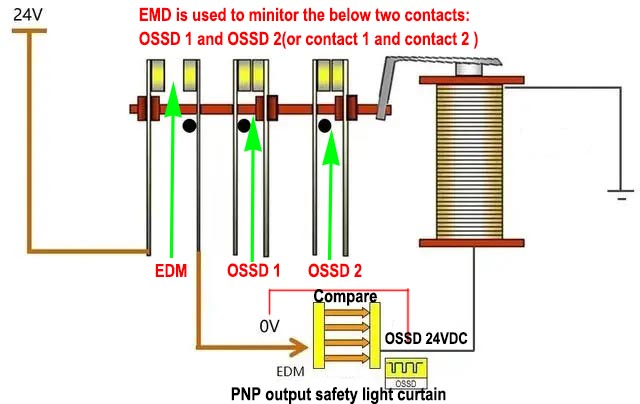
For example, the above figure shows the operation of the EDM after OSSD 1 or OSSD 2 is worn and stuck. Once one or both contacts are stuck, the EDM contacts will not return to the non-operating state, but will remain in the normally open state, which means that the OSSD 1 or OSSD 2 contacts are not working properly. The safety light curtain will receive this signal and shut down the machine to avoid potential risks.
Specifically, the EDM function can continuously monitor whether a specific voltage is applied to the external relay monitoring input line on the safety grating photoreceiver side, and put the safety grating into a locked state when an abnormality is detected. For example, within 300ms after the control output changes from ON to OFF, if the normally closed contact of the external relay has not been closed, that is, the specified voltage is not applied to the external relay monitoring input line, EDM will determine that it is an error and put the safety light curtain into a locked state.
What Are Muting, Blanking And Interlock?
Muting: Muting is a function that allows a specific area of the light curtain to be temporarily ignored by the control system. It is used when there is a need to pass through the light curtain without stopping the machine. Muting is typically used for areas where the risk of injury is low, and it is a temporary solution to allow safe passage.
Muting function is generally used to justify the materials or person in a conveyor belt system, this function allows the materials to go from hazardous area to the safe area without stopping and disallows people from going from safe area to the dangerous area. This function realization is based on the correct time and space sequence.
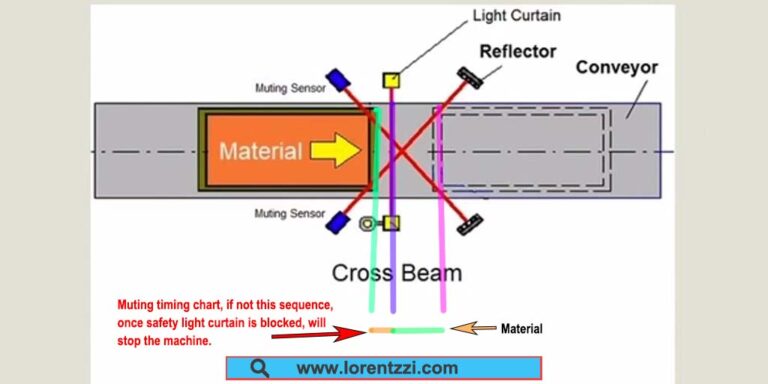
Blanking:Similar to muting, blanking is a function that disables a specific area of the light curtain. However, the difference is that blanking is a permanent or long-term solution. Blanking can be divided into 3 types, namely fixed blanking, floating blanking and fixed+floating blanking. This function is widely used in pressing machines to make the processed metal out of the pressing machine easily in the blanking area but at the same time protecting workers from outside.
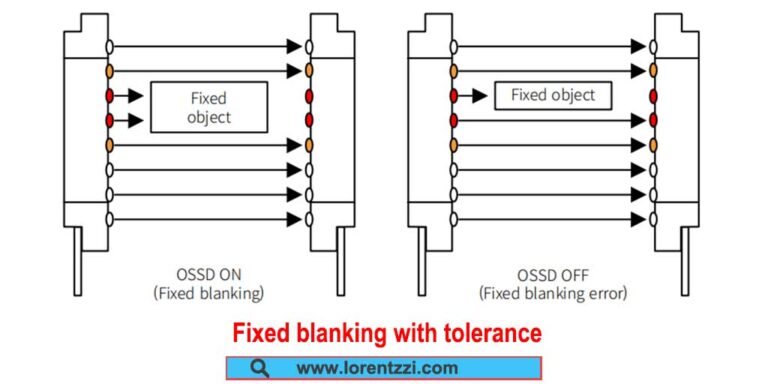
Interlock: An interlock function is a safety mechanism that requires the light curtain to be intact for the machine to operate. If the light curtain is broken (i.e., the light beams are interrupted), the interlock will stop the machine or equipment immediately. This is a crucial safety feature to prevent accidents by ensuring that the machine cannot operate unless the light curtain is fully functional. This function can be reset by manual or auto operation in a safety light curtain.
Conclusion
By reading the above, we think you now have a deeper understanding of safety light curtains.
We, Lorentzzi, a Chinese safety light curtain manufacturer, have a professional team to develop and produce a variety of Type 2 and Type 4 safety light curtains in different lengths with enthusiasm and excellent quality. If you are looking for a safety light curtain manufacturer now, choosing us is your best choice.

